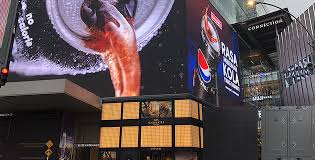1. The Rise of LED Screens in Modern Technology
In recent years, the demand for LED screens has skyrocketed, transforming the way we interact with technology in both personal and commercial settings. LED, or Light Emitting Diode, technology has evolved to become one of the most efficient and versatile display solutions available today. As more industries, including advertising, sports, retail, and entertainment, embrace high-resolution displays, the need for advanced LED screens has become apparent. Manufacturers of LED screens have responded by offering cutting-edge solutions that cater to a variety of needs, from large outdoor billboards to intricate indoor displays. This evolution highlights the importance of selecting the right manufacturer, one who can provide reliable products and continuous innovation.
LED screens offer advantages over older display technologies, such as LCDs and plasma screens. They deliver brighter, sharper images, consume less energy, and have a longer lifespan. These benefits make LED screens ideal for both indoor and outdoor applications, where visibility and durability are crucial. The rise of LED screens can be attributed not only to their superior technology but also to manufacturers’ ability to customize them for diverse uses. As this industry continues to grow, leading manufacturers have positioned themselves at the forefront of innovation, shaping the future of visual displays worldwide.
2. Top Global LED Screen Manufacturers and Their Innovations
Several LED Screens Manufacturers dominate the global market, known for their high-quality products and innovative technologies. Among the top names in the industry are Samsung, LG Electronics, Barco, Unilumin, and Leyard, each offering a wide range of LED display solutions designed to meet specific industry needs. Samsung and LG Electronics, for example, are well-established in the consumer electronics market, bringing their expertise to commercial-grade LED screens, while Barco, Unilumin, and Leyard specialize in large-scale video walls and high-end display systems for professional applications.
Samsung’s MicroLED technology has been a game-changer, offering modular screens that can be customized for various applications, from corporate environments to art installations. LG’s OLED technology, though different from traditional LED screens, provides a unique alternative, especially for customers looking for ultra-thin, flexible displays. Meanwhile, Barco leads in control room displays and event venues, offering durable, high-performance LED walls that are capable of functioning in the most demanding environments. Unilumin and Leyard, on the other hand, have carved out a niche in outdoor advertising, offering robust LED screens capable of withstanding harsh weather conditions while maintaining image clarity. The diverse range of manufacturers and their innovations shows how the industry is constantly evolving, providing solutions that meet the changing demands of modern businesses.
3. Key Factors to Consider When Choosing an LED Screen Manufacturer
When selecting an LED screen manufacturer, businesses must consider several key factors to ensure they are making an informed decision. First and foremost, the quality of the product is paramount. High-resolution displays, durability, and energy efficiency are essential components that can impact a business’s decision. Leading manufacturers are known for their stringent quality control measures, ensuring that their products meet international standards and can provide long-term reliability.
Another important consideration is the range of customization options available. LED screens are often used in very specific settings, whether it’s an indoor retail display or a large outdoor digital billboard. Manufacturers that offer flexible sizing, resolutions, and design options are more likely to meet the unique needs of different industries. Support and maintenance services are also critical when evaluating a manufacturer. Having access to professional after-sales support can be the difference between a smooth operation and prolonged downtime in case of technical issues. Finally, cost-effectiveness should also be considered. While cheaper products may seem attractive, they often come with compromises in quality or durability, so it’s important to find a balance between cost and value.
Many businesses also consider a manufacturer’s commitment to sustainability. As more companies strive to reduce their environmental footprint, LED screen manufacturers are being asked to produce energy-efficient products and adopt environmentally friendly production practices. Manufacturers that can demonstrate a commitment to sustainability are likely to have an edge in the marketplace, appealing to eco-conscious consumers and organizations alike.
4. Challenges Faced by LED Screen Manufacturers in a Competitive Market
The LED screen manufacturing industry is highly competitive, and manufacturers face several challenges as they strive to maintain their market positions. Technological advancement is both an opportunity and a challenge. While innovation is crucial for staying ahead, it also requires constant investment in research and development. Companies that fail to keep up with the rapid pace of technological change risk falling behind their competitors, losing market share in the process. For manufacturers, balancing the cost of R&D with profitability is a significant concern.
Supply chain management is another major challenge. The global semiconductor shortage, caused by disruptions in production and increased demand across multiple industries, has affected the availability of key components needed for LED screen production. This has led to delays in manufacturing and longer lead times for product delivery, putting pressure on manufacturers to find alternative sources or manage their inventory more effectively. Additionally, pricing pressures have become more intense, as companies from emerging markets often offer cheaper alternatives to established brands. To stay competitive, leading manufacturers must continue to offer superior quality while managing costs effectively.
Moreover, the environmental regulations in various countries are becoming more stringent, requiring manufacturers to comply with laws related to energy consumption, waste disposal, and the use of hazardous materials. These regulations are pushing manufacturers to adopt more sustainable practices, which can increase production costs but are essential for long-term success. As consumers become more environmentally aware, manufacturers must ensure that their products align with these expectations while navigating the regulatory landscape.
5. The Future of LED Screen Manufacturing: Trends and Opportunities
Looking ahead, the future of LED screen manufacturing promises exciting trends and opportunities. One of the most prominent trends is the continued development of MicroLED technology, which offers higher brightness, better contrast, and improved energy efficiency compared to traditional LEDs. MicroLEDs have the potential to revolutionize the display industry, especially in applications such as wearable devices,




